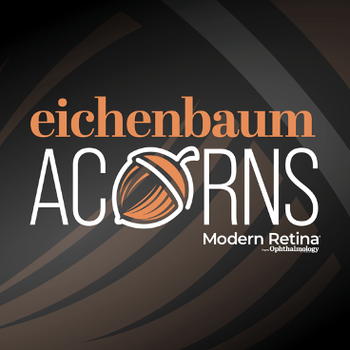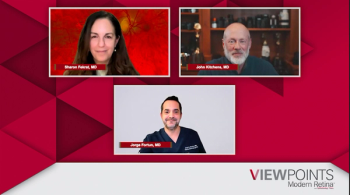
Measuring Success in GA Treatment: Beyond Immediate Vision Gains
Panelists discuss how they explain treatment success to patients with geographic atrophy by emphasizing that although the disease will continue to progress, clinical trial data show that the therapy slows the rate of growth by 20% to 30% on average, acknowledging that individual patient responses vary along a bell curve and that preserving retinal tissue is inherently meaningful for visual function even without immediate measurable vision improvements.
Episodes in this series

Demonstrating treatment success to patients presents significant challenges, as geographic atrophy therapies don’t improve vision or halt progression entirely. Clinicians must carefully explain that although patients will continue to experience disease progression, treatment works by slowing the rate of deterioration compared with untreated natural history. The conversation requires honesty about continued worsening while emphasizing that in an alternate reality without treatment, progression would occur at a faster rate. Without commercially available imaging end points to show patients, clinicians rely on clinical trial data demonstrating 20% to 30% reduction in lesion growth rates across large populations to validate treatment effectiveness.
Patient response follows a bell curve distribution, creating variability in individual treatment outcomes. Some patients demonstrate zero response and continue progressing at baseline rates despite treatment, whereas others show exceptional sensitivity with near-complete progression arrest. Most patients fall within the middle range, achieving the average 20% to 30% reduction in lesion growth observed in clinical trials. However, individual response cannot be determined in the short term, and determining where a patient falls on this response curve requires extended treatment duration of 1 to 2 years with careful imaging analysis.
The clinical meaningfulness of tissue preservation remains an important consideration despite lack of visual acuity improvements in trials. Although neither drug has demonstrated visual acuity outcome differences in parent studies or extension trials, some functional visual changes have been suggested in extension data. The fundamental question centers on whether retinal tissue preservation translates to meaningful functional benefit. Natural history studies demonstrating progressive functional vision loss with disease advancement suggest that tissue preservation should provide corresponding functional benefits. Given the established connection between disease progression and functional debility including driving vision loss, tissue preservation through treatment likely represents clinically meaningful intervention even without measurable visual acuity improvements in current clinical end points.
Newsletter
Keep your retina practice on the forefront—subscribe for expert analysis and emerging trends in retinal disease management.












































